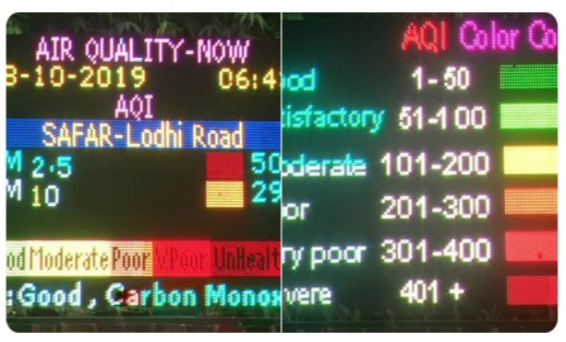New Delhi: The morning after Diwali, Delhiites woke up to a thick cloud of smog as the air quality dipped to 'very poor' category following the festival of lights.
According to the System of Air Quality and Weather Forecasting And Research (SAFAR) the overall air quality of the national capital is in the higher-end of 'very poor' category today.
"Although the air quality is predicted to be touching SEVERE levels in the wee hours on October 28 but the peak level of particulate matter (PM) 2.5 is likely to be lowest," said SAFAR.
Most polluted locations post-Diwali are Delhi University (North Campus), Pusa, Rohini-Punjabi Bagh, Wazirpur, Jahangirpuri, DTU and Bawana, Major residential areas, while the lowest polluted areas are Gurgaon, Ayananag and Nehru Stadium.
According to the Air Quality Index (AQI) recorded earlier today the levels of PM 2.5 and PM 10 were at 423 and 462 respectively in Chandani Chowk, while major pollutant levels of PM 2.5 were at 500 in 'Severe' category, in Lodhi Road area.
An AQI between 0 and 50 is considered 'good', 51 and 100 'satisfactory', 101 and 200 'moderate', 201 and 300 'poor', 301 and 400 'very poor', and 401 and 500 'severe'.
The highest impact of firecracker emissions (if any) is expected to be moderate and if no additional emissions due to firecrackers are added then the Air Quality will remain in the middle to the high end of 'very poor' during Diwali period.
Haryana and Punjab fire counts almost doubled from during the past 48 hours and increased from 1200 to 2700 as evident from SAFAR-multi-satellite product.
AQI will continue to remain in 'very poor' category but no prolonged extreme pollution event is expected, according to SAFAR.








